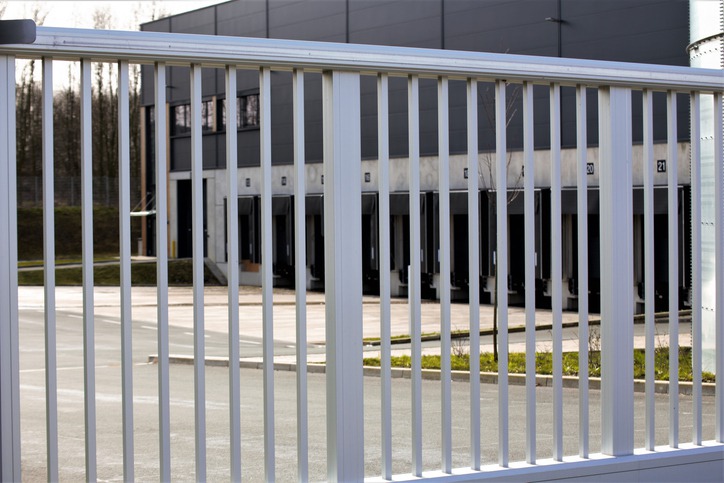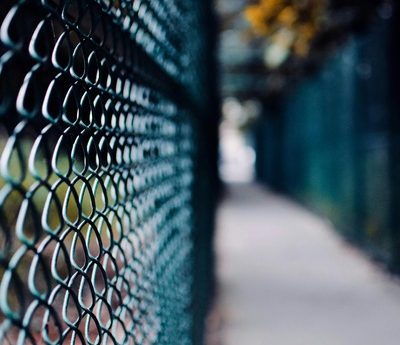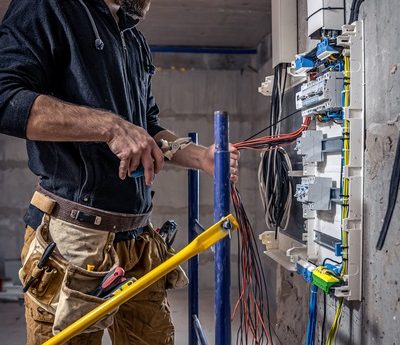Commercial fencing plays a key role in securing your business. Installing commercial fences isn’t just about marking boundaries; it’s about ensuring safety, enhancing privacy, and improving the overall aesthetic of your property. But where are the most popular locations for installing these fences, and why do businesses choose these spots?
1. Industrial Areas
Industrial zones are hotspots for commercial fencing. These areas often contain valuable machinery, raw materials, and finished products that need protection. Here are some reasons why fencing is pivotal in these locations:
-
High-security needs for expensive equipment
-
Control of entry and exit points for personnel and vehicles
-
Protection from theft and vandalism
-
Ensuring safety regulations are met
If you’re looking for a reliable fence company, it’s wise to choose one with a good reputation and local expertise. For instance, search for fence companies Tulsa to find the best options available in your area. Local companies often understand the specific needs and regulations better, making your fencing project smoother and more efficient.
2. Commercial Properties
Businesses such as retail stores, shopping malls, and office complexes also benefit greatly from commercial fencing. They often install fences for added security and to enhance the property’s visual appeal. Benefits include:
-
Enhanced security for customers and employees
-
Clear boundary definition to prevent trespassing
-
Improved aesthetic appeal for commercial properties
-
Guidance for pedestrian and vehicle traffic
For commercial fencing, businesses have several options to choose from, depending on their specific needs. Some popular materials and types include:
-
Chain Link Fencing: Ideal for security with visibility
-
Wood Fencing: Offers privacy and aesthetic appeal
-
Wrought Iron Fencing: Known for durability and strength
-
Vinyl Fencing: Low maintenance and versatile in design
3. Schools and Universities
Educational institutions prioritize the safety of students and staff. Hence, they install fences around their premises. Key reasons include:
-
Prevent unauthorized access
-
Ensure student safety during school hours
-
Guidance for traffic flow within the campus
-
Enhanced monitoring of entry and exit points
4. Hospitals and Healthcare Facilities
Hospitals and healthcare facilities also see the need for commercial fencing. These institutions often have sensitive areas and materials that need to be protected:
-
Security for medical equipment and pharmaceuticals
-
Controlled access to critical care areas
-
Protection of patients and staff
-
Clear navigation for emergency vehicles and personnel
5. Government Buildings
Government offices and buildings require strict security protocols. These locations use commercial fences to:
-
Secure sensitive information and documents
-
Control public access to certain areas
-
Protect infrastructure and assets
-
Guide foot and vehicle traffic effectively
6. Warehouses and Storage Facilities
Storage facilities and warehouses are vulnerable to theft and unauthorized access. Fencing helps in:
-
Securing valuable inventory
-
Managing access control effectively
-
Preventing unauthorized entry
-
Maintaining a safe environment for staff
7. Sports Facilities and Stadiums
Sports arenas and stadiums attract large crowds, making security a top priority. Fences are installed to:
-
Manage crowd control
-
Define specific zones and restricted areas
-
Ensure player and spectator safety
-
Secure sporting equipment and facilities
8. Parks and Recreational Areas
Parks and recreational areas use fencing not only for security but also for safety and management:
-
Define boundaries clearly
-
Ensure the safety of visitors
-
Prevent unauthorized vehicle entry
-
Protect natural habitats within
Over time, even the best fences for parks and recreational areas can suffer wear and tear. Proper maintenance and timely repairs are essential to keep them functioning well. If you need to fix your fence, here are some common issues to look out for:
-
Rust and corrosion in metal fences
-
Wood rot and insect damage in wooden fences
-
Cracking and warping in vinyl fences
-
Broken or loose chain links in chain link fences
Best Practices for Fence Maintenance
Regular maintenance can extend the lifespan of your fences and save you money in the long run. Consider these tips:
-
Regular Inspections: Check your fence periodically, ideally at least once a year, for signs of damage such as cracks, warping, or loose components. Early detection allows you to address issues before they worsen.
-
Cleaning: Dirt, grime, and debris can accumulate on fences, especially in outdoor environments. Regular cleaning with mild soap and water, a brush, and possibly a power washer for tougher stains helps prevent buildup that can lead to deterioration.
-
Protective Coatings: If you have metal fences, applying protective coatings like paint, powder coating, or specialized rust-resistant coatings can help prevent corrosion and extend the lifespan of the metal.
-
Prompt Repairs: When you notice any damage, such as a broken picket, loose post, or rust spot, address it promptly. Repairing or replacing damaged parts prevents further deterioration and maintains the integrity of the fence.
Final Thoughts
Choosing the right locations for commercial fencing is crucial for maximizing security, safety, and aesthetic appeal. From industrial areas to recreational parks, each location has unique needs and benefits from specific types of fences. Proper maintenance and timely repairs ensure your fences serve their purpose for years to come. Always choose a reputable fence company for quality installations and services, and explore various commercial fencing solutions to meet your business’s specific requirements.





